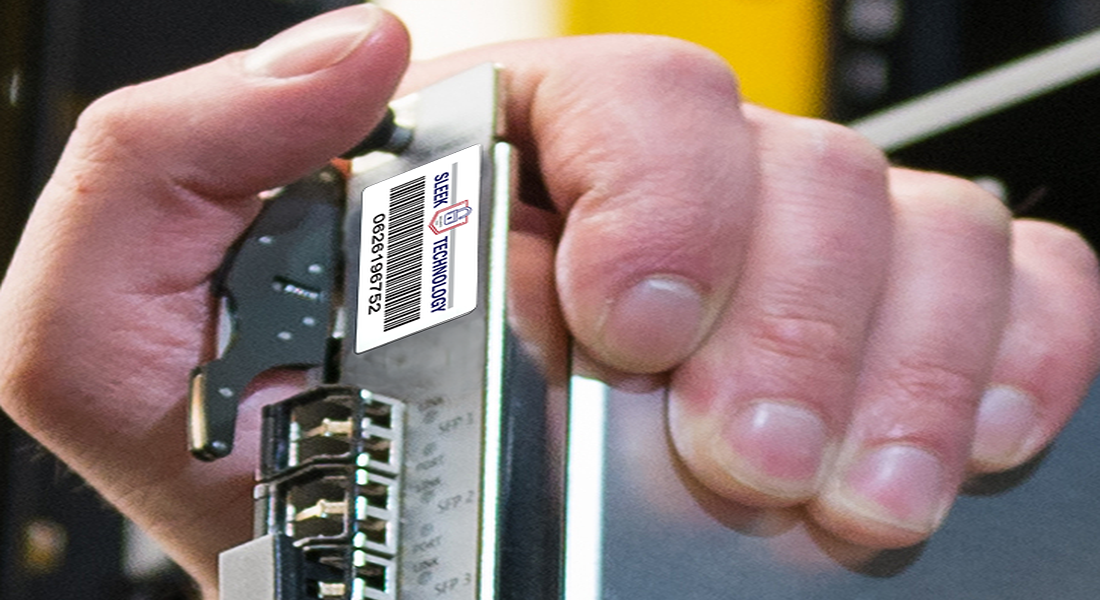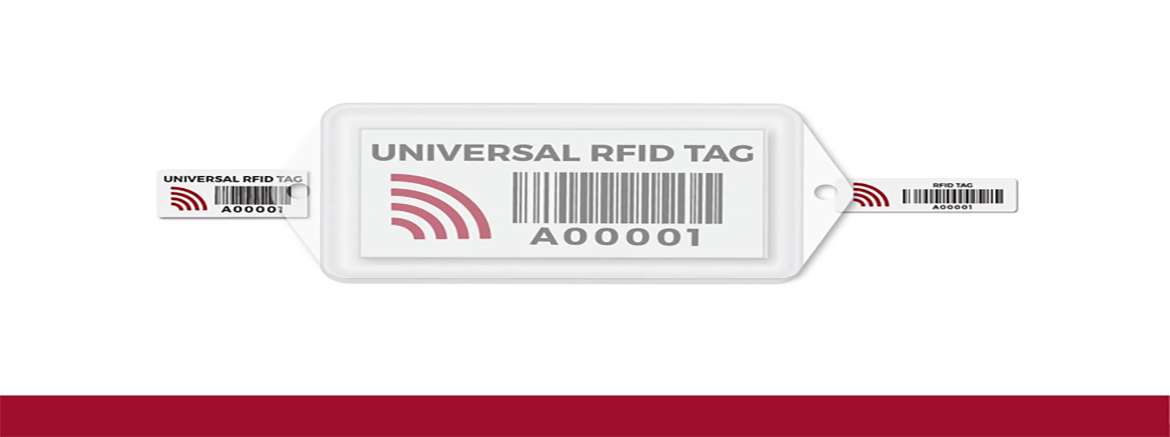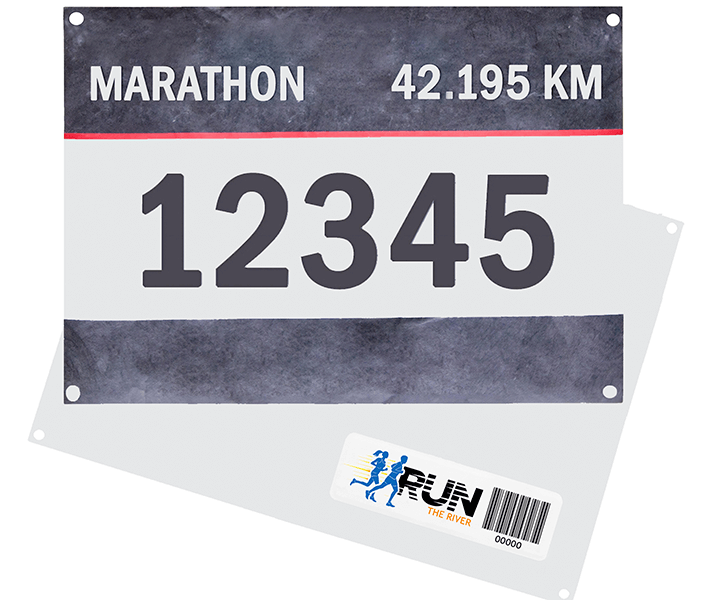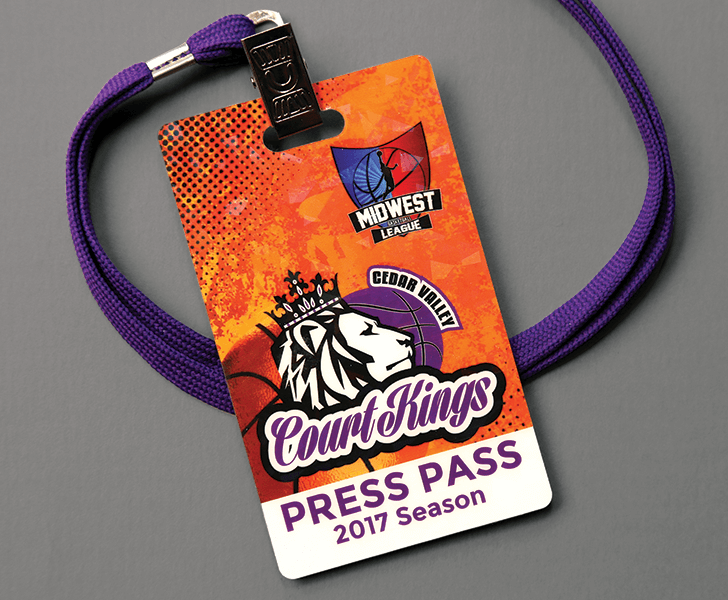We’ve created an ultra-low profile RFID Race Timing Tag (wearable on people) for athletic events like marathons, races, triathlons and more. Most other RFID race timing tags use an uncomfortable foam backing that can cause unreliable performance data. Our tag adheres to race bibs and is built for great performance and sensitivity to track runners’ splits and times throughout the race. Each FastTrack RFID tag is customizable with colorful text and logos, have an excellent read distance and the thermal-transfer receptive material can be printed on site. These are highly customizable with “just right” engineering…that’s ID Made Better®.
Metalcraft's RFID Race Timing Tag is a low profile RFID tag that easily adheres to race bibs and has great performance and sensitivity to track runners splits and times throughout the race. Each RFID label is customizable with your text and logo.
Produced with a digital printing process that provides photographic like image quality of detailed logos or special designs, Metalcraft's RFID Credential Tags and Name Badges are the perfect solution when you want your image to leave a lasting impression.
If you’re handling a concert or other event with lines of people awaiting access, use RFID wristbands to quickly and efficiently manage crowd entry. The wristbands feature an RFID inlay to grant access with ease. The wristbands feature an RFID inlay to grant access with ease.
How do race timers use RFID for timing?
Race timers use RFID (radio frequency identification) technology for timing events in a variety of sports, including running races, triathlons, cycling races, and more. The RFID timing system consists of several key components:
- RFID Tags or Chips - participants are provided with RFID tags or chips, which are small electronic devices that contain a unique identifier associated with each participant. These RFID tags are usually attached to the participants’ bibs, shoelaces, wristbands, or other wearable items.
- Antenna and RFID Readers - RFID timing systems include antennas and RFID readers strategically placed at specific points along the race course, such as the start line, finish line, and intermediate checkpoints. The antennas emit radio frequency signals, and when a participant with an RFID tags passes through the antenna’s read zone, the RFID reader captures the unique identifier from the tag.
- Timing Software - the captured data is then sent to timing software, which processes the information and records the precise time at which each participant passed each timing point. The timing software is capable of handling large numbers of participants simultaneously.
Why do race timers use RFID for timing?
Race timers use RFID (radio frequency identification) for timing events due to several advantages that this technology offers.
- Accuracy and Precision - RFID timing systems provide accurate and precise timing data. The technology allows for reliable capture of participants’ unique identifiers as they pass through timing points, ensuring accurate recordings of start, finish, and split times.
- Efficiency - RFID systems significantly improve the efficiency of timing processes. They automate the data collection process, eliminating the need for manual recording of participant times. This reduces the likelihood of errors and speeds up the overall timing workflow.
- High Throughput - RFID technology can handle a large number of participants simultaneously. This is particularly important in mass participation events such as marathons, where hundreds or thousands of participants may be passing through timing point within a short time frame.
- Real-Time Data - RFID timing systems provide real-time data, allowing race organizers, participants, and spectators to access up-to-the-minute information on participant positions and race progress. This enhances the overall experience for everyone involved.
- Non-Intrusive for Participants - RFID tags are typically attached to participants’ bibs, shoes, or other wearable items. This non-intrusive setup allows participants to focus on their performance without being burdened by additional equipment or manual recording processes.
- Scalability - RFID timing systems are scalable and can be adapted to events of various sizes and complexities. Whether it’s a small local race or a large international event, RFID technology can scale to meet the specific timing needs.
In summary, race timers choose RFID for timing because it offers a combination of accuracy, efficiency, scalability, and real-time data, ultimately contributing to a smoother and more enjoyable experience for both participants and organizers.
From The Asset Tracking Blog

Metalcraft Explores Growing RFID Market
Metalcraft President Kyle Bermel sits down with Label & Narrow Web Magazine to discuss how different market segments can benefit from RFID technology and how Metalcraft is up to the challenge.

Metalcraft's RFID Tag Tops In Industry Reports Study
University of Texas at Arlington study confirms that an RFID tag from Metalcraft will perform reliably and accurately with better than average readability.
What is RFID? A Basic Guide to Radio Frequency Identification
Integrated chip ... antenna ... substrate .... these are all parts of what makes up and RFID tag. Our guide explains these components as well as takes a look at the different types of RFID tags.



